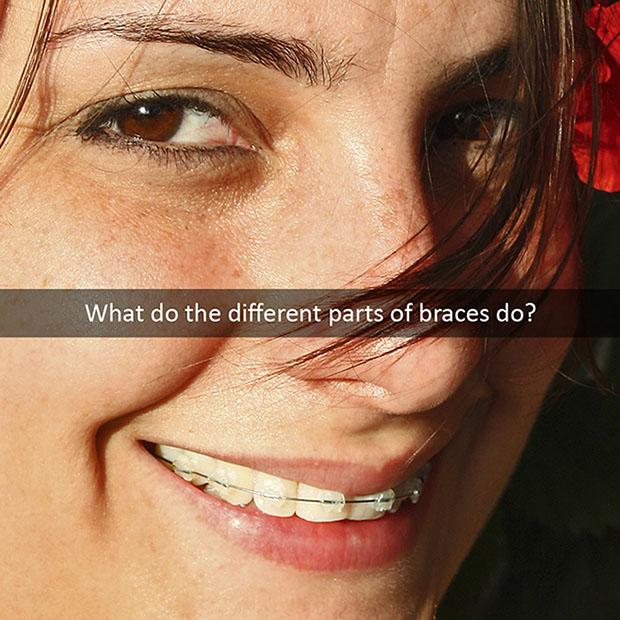What Do the Different Parts of Braces Do?

Every orthodontic patient has probably wondered what all the different parts are for in their braces.
Some patients will have special appliances to correct a difficult problem, but the basics in traditional braces are the brackets and archwires, all held together with ligatures (also called bands or o-rings).
The Anchors: Brackets
When we look closely at a new patient’s braces, the brackets aren’t all in a straight line. They might even make the teeth look more obviously crooked. This is because the orthodontist places them in a specific position so that they will be pushed in the right direction when the archwire is added.
The Leverage: Archwires
The archwire runs through all of the brackets on an arch, and it varies in thickness and material depending on what the orthodontist needs it to do for the patient’s treatment plan. Archwires provide steady, gradual pressure to guide the teeth towards the correct position, and the colorful (or clear) ligatures hold everything together.
Bonus Features: Elastics and More
If a treatment plan involves more pieces than these, the most common addition is elastics. These are used to correct bad bites (malocclusions) by bringing the jaws into proper alignment. However, the only way they can do their job is if the patient follows the orthodontist’s instructions for how many to wear and how often. Too many are just as unhelpful as too few, so don’t try to speed things up by wearing double the recommended amount!
